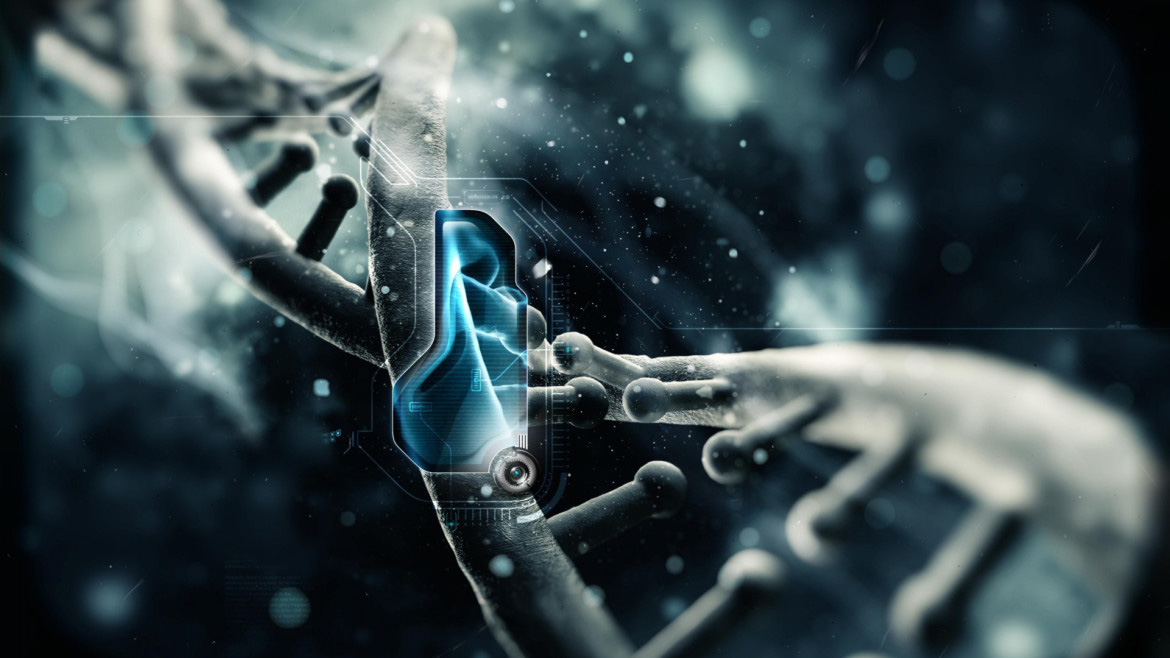Genetic preventive programme
The importance of genetics
Our genes condition our lives, the state of our health, and therefore our performance. Genetic analysis permits us to design a personalized plan focused on alleviating the genetically marked, specific risks and simultaneously enhance our strengths to obtain an optimum quality of life.
For example, GST genes, which in combination with an inflammatory tendency and ApoE4, will have an influence on the correct neurological development of the baby and its early vulnerability towards certain medicines and food.
Is it frequent?
In the last thirty years’ neurological development disorders have occurred with greater frequency. Influential in this increase are not only the advances in giving diagnoses but also the high levels of environmental pollution and nutritional imbalances in the early stages of pregnancy, when the brain is in full development and is extremely vulnerable. If those environmental factors co-exist with specific innate genetic vulnerabilities, they could prove to be extremely damaging either to mothers or children.
Diverse studies have shown that prenatal exposure to particular environmental toxins is enough to cause a significant impact on intellectual functions and provoke behavioural disorders.
Why?
In the protocol available only the neurological or neurocognitive aspect is evaluated and dealt with, when, in the majority of cases, these pathologies present a great variety of symptoms and health complications that go beyond the nervous system. This is due to the fact that the current treatments are of a general character. Through the genetic study GGI-Neuro Programme, we are able to discover the reason for the disorder and then react accordingly to the key factors detected in the DNA of the patient, strengthening it and preparing it to fight these factors by following dietary, pharmacological or toxicological instructions.
The method of Professor Jose Ignacio Lao has been published as the first to describe genetic profiles for an adequate individualized diagnosis.
Jose I.Lao Biol Med J., 2014, S1.
Main milestones of the published study:
1st. Identify the genetic profiles which allow us to define the main clinical subgroups or endophenotypes that can make clinical differences.
2nd. Define criteria based on genomic analysis that allow for the differential estimation of the prognosis and the clinical evolution.
3rd. Establish support methods individually basing them on the profiles or endophenotypes and on prognostic factors.
The main conclusion of the article is that the application of this method permits us to recognize that all cases, even though they may have the same clinical diagnosis, need an intervention strategy or totally different support, which responds to their own unique biological characteristics, to be able to act according to the different potential responses that can be expected in each case.
Published by Editorial Group OMICS in the scientific journal Biology and Medicine.
How?
To prevent such alterations or treat them, Genomic Genetics International has developed a programme and a specific methodology. Based on Genomic Analysis, they allow us to examine the diagnosis closely and understand the specific nature of each of our patients, enabling us to offer them personalized therapy – according to their specific genetic imbalance – that acts in two main areas: genetics itself and nutritional compensation. And all of this from a simple saliva sample.
When?
In this type of programme, it is fundamental to have the earliest possible assistance, since, once the organism comes under attack from external factors, the ability to recover is diminished, causing cerebral wear which is difficult to repair.
It is highly recommendable to carry out the genetic study after the appearance of the first symptoms, to be able to design the treatment to be followed and therefore increase the probability of recovery.
Who is it for?
Especially advisable for all those people with some type of neurodevelopmental disorder, diagnosed or not, who would like to know its origin and learn to improve their daily life controlling and easing the negative effects.
Methodology
Being very conscious of the difficulty that therapies and their implementation entail, we propose an initial therapeutic action plan to be carried out in two stages. Later, each patient will have to follow a personalized plan determined by the medical department and based on their genetics.
Phase 1 – Evaluation and Diagnosis
Etiological analysis or diagnosis of rare diseases
Health potential analysis for rational diet design and neurocognitive stimulation or neurorehabilitation, with the objective or evaluating treatment and offering an adequate genetic assessment to the families.
Phase 2 – Monitoring and Treatment
Definition and implementation of a specific nutritional plan based on the genetic results
Results monitoring and patient advances in the development of the implemented treatment, and recommendations for the families and patients
Special emphasis on the correction of the balance and the stimulation of biological functions and neurobiochemistry to improve potential innate response and organic defence capacity.
Autisn spectrum desorder
(Autism ASD)
In the large majority of cases there are no known direct causes that can be associated to ASD, and therefore, it is considered to be a problem of multifactorial origin in which diverse genetic causes and environmental factors are influential.
In these cases, in which habitual medical protocol has not been able to detect a direct cause, the importance of examining more closely genetic studies is fundamental. Particularly useful for the prevention of new cases in the family, it becomes paramount when the risk of having a second child with the disorder (the risk of recurrence) multiplies, if a case of ASD already exists. Yet, we can plan the appropriate treatment to try to restore the affected or altered pathways.
Analyzed potentials
- The capacity for recovery from neuronal damage (neuroplasticity)
- Cerebral dopamine and serotonin levels and pharmacogenetics
- Risk of family inheritance in new cases
- Tolerance to environmental toxins and their effect on neurodevelopment
- Pharmacogenetics, tolerance to medicines and their expression
Attention deficit desorder
(With or without hyperactivity)
Within Autism Spectrum Disorder, Attention Deficit Disorder with or without hyperactivity (ADD/ADHD), which is by definition, a behavioural syndrome with clear neurobiological bases and a strong genetic component, stands out.
It is notable among people with ASD, since it is a very prevalent syndrome that according to estimations, affects between 5 and 10% of the infant-juvenile population. It has been calculated that it represents between 20 and 40% of infant-juvenile consultations in the psychiatric service.
The ADD/ADHD genetic study bears in mind the multifactorial element, the constant interaction between genes and environments, since only in this way are we able to come to understand it.
In ADD/ADHD genetics it is important to highlight the pathways that determine neurotransmitter levels in the frontal area of the brain as they help us to define the greater or lesser benefit of the use of medication such as methylphenidate and will contribute to the design of alimentary guidelines.
By determining the causal origin of such alterations in the patient, we will be able to prevent, adapt and correct the neurobiological circuits through a personalized treatment.
Analyzed potentials
- The mechanisms that favour the inflammation of the CNS, (neuro-inflammation).
- Factors that determine special metabolic needs.
- Enzymatic protection systems against toxics.
- Response capacity to medication.
Pervasive developmental desorder
In this group we find those cases that do not meet the criteria to be classified as ASD or ADD/ADHD or a specific syndrome, but which do manifest some degree of developmental disorder although it may be of an atypical form. In these cases, rather than perform a diagnosis, the genomic analysis protocol will help us to understand the clinical manifestations, and to try to redefine and redirect recovery strategies.
Analyzed potentials
- Differential response potential in the pathways that intervene in neurobiological mechanisms.
- Immunological response capacity
- Protection mechanisms against toxics (antioxidants)
- Pharmacogenetics: Pharmacological response potential
Cerebral paralysis
When faced with a case of infant cerebral paralysis, the first hypothesis is a possible traumatic birth that has provoked a mechanical injury or a prolonged lack of oxygen. In contrast, it is rarely thought that an underlying cause could exist that creates a greater vulnerability to the damage.
The presence of multiple cases of cerebral paralysis in the same family and the greater incidence of this illness in the descendants of marriages between blood relations suggests the existence of a genetic base between 1% and 2% of cases. However, in the large majority of cases we must address the multifactorial context, where a genetic predisposition base, acts as the predominant element or facilitator of damaging environmental effects, among which are physical traumatism, intoxication or even an infection, which rather than being the cause would act as triggers for the problem.
Analyzed potentials
- Clotting mechanisms (to control cerebral and placental microinfarcts.
- Facilitating factors of an exaggerated neuroinflammatory response.
- Vulnerability to chemical and environmental toxicity.
- Pharmacogenetics: will determine the pharmacological dosage and typology.
Mental retardation (intellectual handicap)
In mentally handicapped patients the correct diagnosis is an essential step to establish an adequate treatment. Genetic and environmental factors must be established in an independent way within the sum of etiologic factors.
The majority of times we are faced with cases of mental retardation of an unknown origin, since the first diagnostic approach, which determines if the origin is environmental or genetic, only achieves a success rate of 64% of cases within the Intelligence quotient (IQ) inferior to 50% (being as little as 20 to 24% in the patient group with an IQ of between 50 and 60, the most frequent group). For this reason, we can state that currently, in spite of the technological means which exist, a specific reason is only found in a quarter of all cases. This is the reason for which the large majority of mentally handicapped patients continue to be labelled as idiopathic (having an unknown cause). Among those whose cause is eventually identified, the majority is found to be genetic, with Down syndrome being the most common – in both sexes – and the so-called Fragile X syndrome for male cases. However, there are more than 500 syndromes with a genetic base with show symptoms of mental retardation, which means that among the idiopathic cases of mental retardation, genetic analysis is the essential step to finding the cause.
In this process, at Genomic Genetics International we put into practice not only traditional methods (Chromosomal Analysis, Metabolic studies, etc.) but also latest generation tools based on arrays or biochips of DNA, which will be used in those idiopathic cases of mental retardation once environmental causes, chromosome disorders (including Fragile X syndrome) and metabolic diseases have been discarded.
In this way, not only can treatments be adapted and the life of the mentally handicapped person be improved, but we can also prevent the inheritance of the symptomatology and mental retardation in future generations of the family.
NeuroProgram – 1200 euro, the programme consists of:
Phase 1
1st Medical Visit
2nd Medical Visit
Phase 2
3rd Visit Nutritionist
4th Visit Nutritionist

